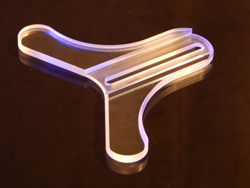What is Fluid Slip?
Fluid Slip is a term commonly used to describe the migration of liquid around the internal moving parts of gear, lobe, and vane pumps. It is the volumetric difference between physical component displacement and liquid throughput of a pump system. Slip loss refers to the liquid that passes through the clearance space (approximately 0.00005 inches) between the piston and the cylinder wall. Since this clearance represents a restrictive passage of essentially constant dimension, the slip rate is determined by viscosity, pressure and time.
Assuming constant liquid viscosity and pressure, slip will be a smaller factor in a high repetition rate pump (short time per stroke) than in a low repetition rate pump. As viscosity increases and pressure decreases, time becomes a less significant contributor to slip loss. The clearance can be modified to compensate for viscosity. The clearance between the piston and cylinder wall must be optimized for the liquid being pumped in order to minimize the loss due to fluid slip.
In order to minimize fluid slip, the reservoir height and tip height need to be considered. As a general rule, the reservoir height and tip height should be equal. A fluid’s viscosity will play a part in this determination. One way to determine the optimal position of the reservoir and tip is to prime the input and output lines with fluid and observe the output line for fluid movement during idle time. If the fluid moves back in the line, raise the reservoir. If the fluid drips from the tubing, lower the reservoir. The goal is to achieve zero pressure differential over the pump.
Fluid Slip is an important factor to consider through the design and build stages of any pump or pump component. If you have any questions about fluid slip, please contact us and we would be happy to help.
